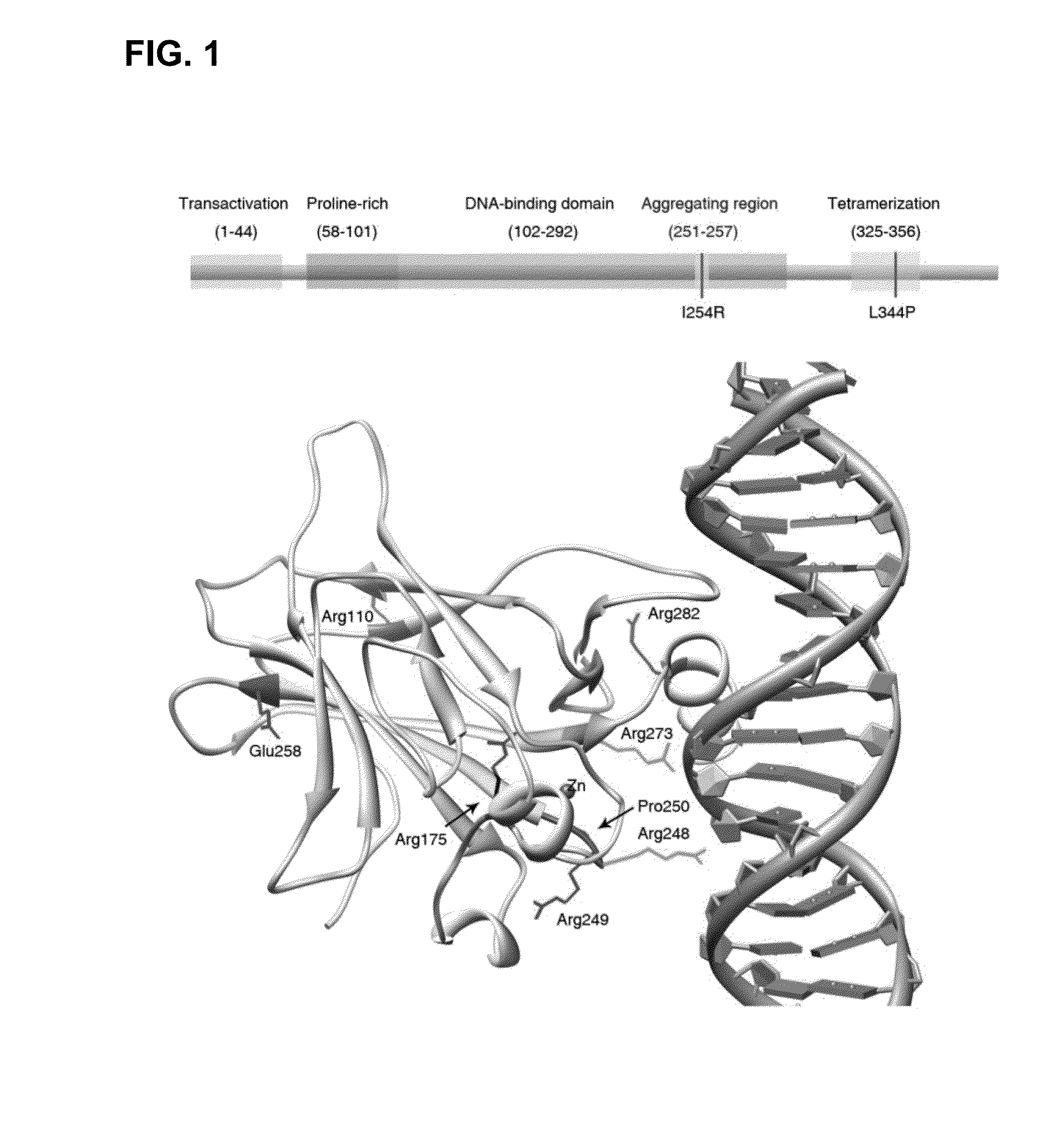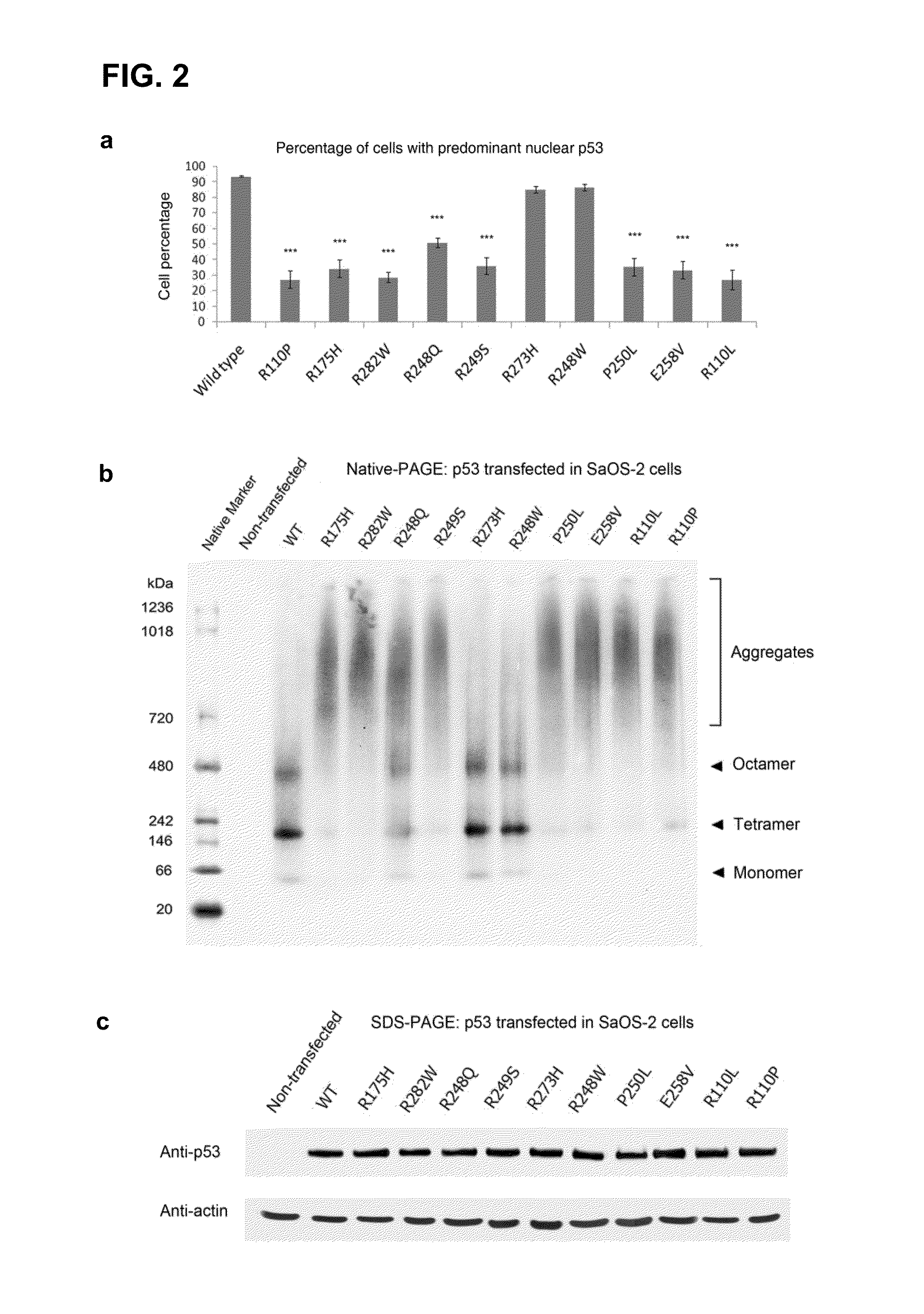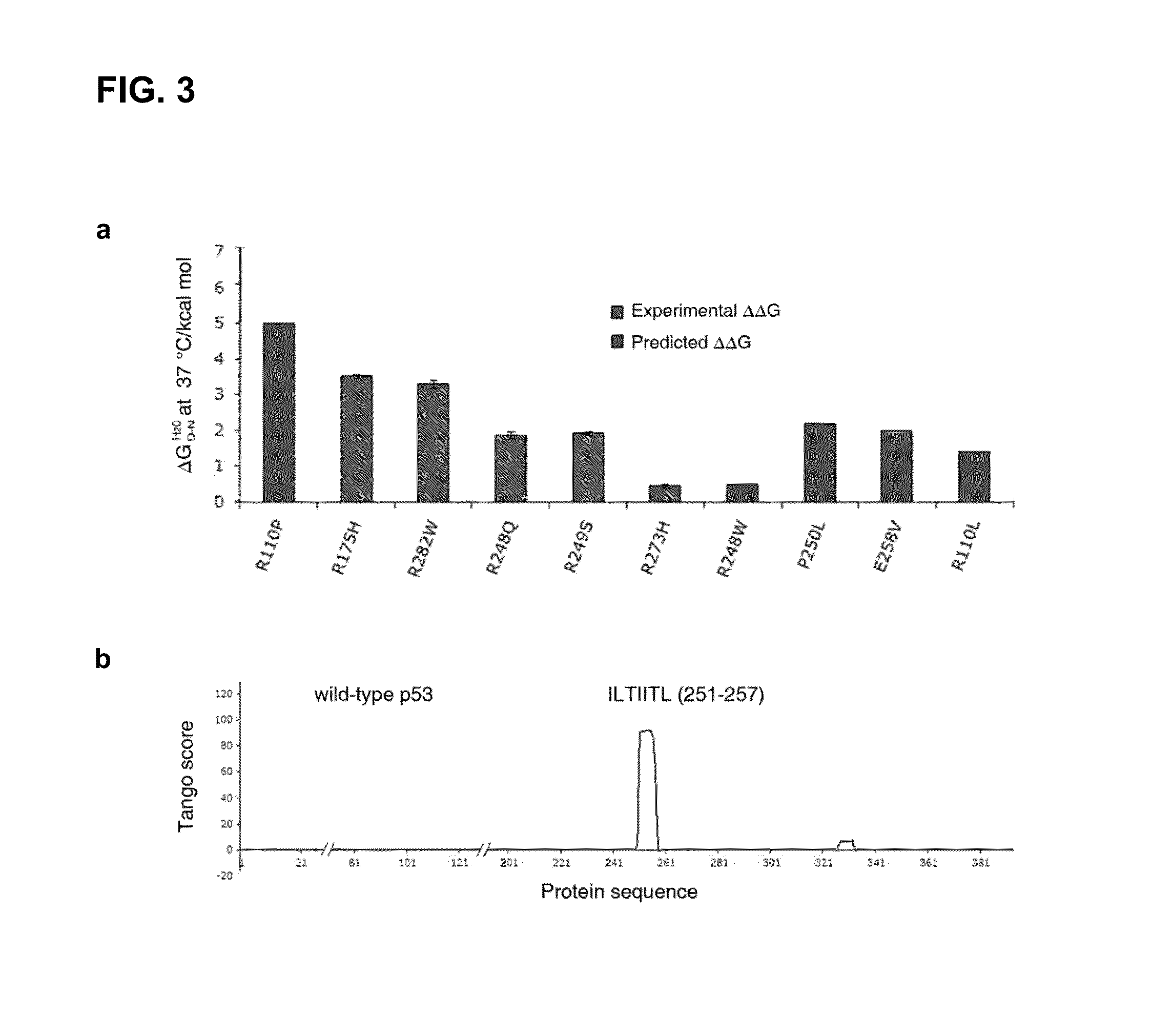Methods for screening inhibitors of tumor associated protein aggregation
- Summary
- Abstract
- Description
- Claims
- Application Information
AI Technical Summary
Benefits of technology
Problems solved by technology
Method used
Image
Examples
example 1
Structurally Destabilized p53 Mutants Aggregate In Vitro
[0155]In order to investigate the effect of contact and structural mutations in p53 on their cellular distribution, wild-type and mutant p53 in the human osteosarcoma SaOS-2 cell line, which is devoid of endogenous p53, was first transiently over-expressed. Immunofluorescence revealed a predominant nuclear distribution of wild-type p53 and of the DNA-contact mutants R248W and R273H. In contrast, p53 mutants R175H, R282W, R249S, R248Q, P250L, E258V, R110L and R110P showed reduced nuclear staining, with a compensatory increase of cytoplasmic staining (data not shown; and FIG. 2, panel a), with the latter regularly containing “punctate” cytoplasmic spots. A punctate staining suggested the assembly of mutant p53 into large aggregates within the perinucleus, and was consistent with an impaired nuclear import of p53.14
[0156]To further investigate the aggresomal nature of the observed inclusions, several strategies were adopted. (i) ...
example 2
Analysis of the Aggregation Propensity of p53
[0157]To better understand why structurally destabilized mutations in p53 would induce aggregation, TANGO,17 an algorithm to predict protein aggregation sequences, was used to identify regions in the protein that would be prone to aggregation. Here, an aggregation-nucleating segment was identified that spans residues 251 to 257 (ILTIITL; SEQ ID NO:2) in the hydrophobic core of the p53 DNA-binding domain (DBD). In the native structure, these residues form a 13-strand that is an integral part of the hydrophobic core of the p53 DBD (FIG. 1). Mutations that destabilize the tertiary structure of the DBD are, therefore, likely to increase the exposure of regions that are normally buried in the hydrophobic core,18 such as the aggregation-nucleating region, and, therefore, also prone to trigger aggregation of the p53 protein by assembly of the aggregation-nucleating stretch into an intermolecular β-sheet-like structure (FIG. 3).
[0158]To retrieve ...
example 3
Interfering with the Aggregation Propensity of p53
[0160]To further reveal the significance of this aggregating zone, an in silico analysis was performed using TANGO, searching for additional mutations that would abrogate the aggregation propensity of that zone. Several mutations with such characteristics were identified and introduced into the p53 expression vectors. An example of such mutation is residue 254, present in the middle of the aggregation nucleus, which were mutated from a hydrophobic to a positive charge (I254R) (FIG. 5, panel a). By introducing this additional mutation, suppressed aggregation of these p53 mutants was expected.
[0161]Indeed, when analyzing the double mutant p53E258V / I254R and p53R175H / I254R proteins, on BN-PAGE after transient over-expression in SaOS-2 cells, both failed to aggregate; instead, they were efficiently degraded as indicated by the significant reduction in overall mutant protein levels compared to the wild-type (FIG. 5, panel b). Importantly,...
PUM
| Property | Measurement | Unit |
|---|---|---|
| Fraction | aaaaa | aaaaa |
| Dynamic viscosity | aaaaa | aaaaa |
| Fluorescence | aaaaa | aaaaa |
Abstract
Description
Claims
Application Information
 Login to View More
Login to View More - R&D
- Intellectual Property
- Life Sciences
- Materials
- Tech Scout
- Unparalleled Data Quality
- Higher Quality Content
- 60% Fewer Hallucinations
Browse by: Latest US Patents, China's latest patents, Technical Efficacy Thesaurus, Application Domain, Technology Topic, Popular Technical Reports.
© 2025 PatSnap. All rights reserved.Legal|Privacy policy|Modern Slavery Act Transparency Statement|Sitemap|About US| Contact US: help@patsnap.com



